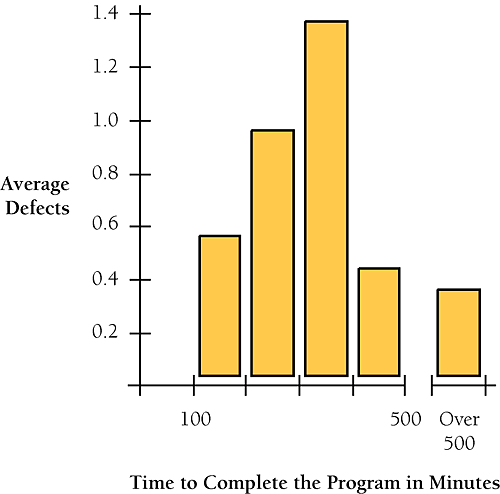20.5. The General Principle of Software Quality
| < Free Open Study > |
Understanding this principle depends on understanding a key observation: the best way to improve productivity and quality is to reduce the time spent reworking code, whether the rework arises from changes in requirements, changes in design, or debugging. The industry-average productivity for a software product is about 10 to 50 of lines of delivered code per person per day (including all noncoding overhead). It takes only a matter of minutes to type in 10 to 50 lines of code, so how is the rest of the day spent? Part of the reason for these seemingly low productivity figures is that industry average numbers like these factor nonprogrammer time into the lines-of-code-per-day figure. Tester time, project manager time, and administrative support time are all included. Noncoding activities, such as requirements development and architecture work, are also typically factored into those lines-of-code-per-day figures. But none of that is what takes up so much time. Cross-Reference For details on the difference between writing an individual program and writing a software product, see "Programs, Products, Systems, and System Products" in Section 27.5. The single biggest activity on most projects is debugging and correcting code that doesn't work properly. Debugging and associated refactoring and other rework consume about 50 percent of the time on a traditional, naive software-development cycle. (See Section 3.1, "Importance of Prerequisites," for more details.) Reducing debugging by preventing errors improves productivity. Therefore, the most obvious method of shortening a development schedule is to improve the quality of the product and decrease the amount of time spent debugging and reworking the software.
A study at IBM produced similar findings:
Figure 20-2. Neither the fastest nor the slowest development approach produces the software with the most defects The two slowest groups took about five times as long to achieve roughly the same defect rate as the fastest group. It's not necessarily the case that writing software without defects takes more time than writing software with defects. As the graph shows, it can take less. Admittedly, on certain kinds of projects, quality assurance costs money. If you're writing code for the space shuttle or for a medical life-support system, the degree of reliability required makes the project more expensive. Compared to the traditional code-test-debug cycle, an enlightened software-quality program saves money. It redistributes resources away from debugging and refactoring into upstream quality-assurance activities. Upstream activities have more leverage on product quality than downstream activities, so the time you invest upstream saves more time downstream. The net effect is fewer defects, shorter development time, and lower costs. You'll see several more examples of the General Principle of Software Quality in the next three chapters. cc2e.com/2043
|
| < Free Open Study > |
EAN: 2147483647
Pages: 334

